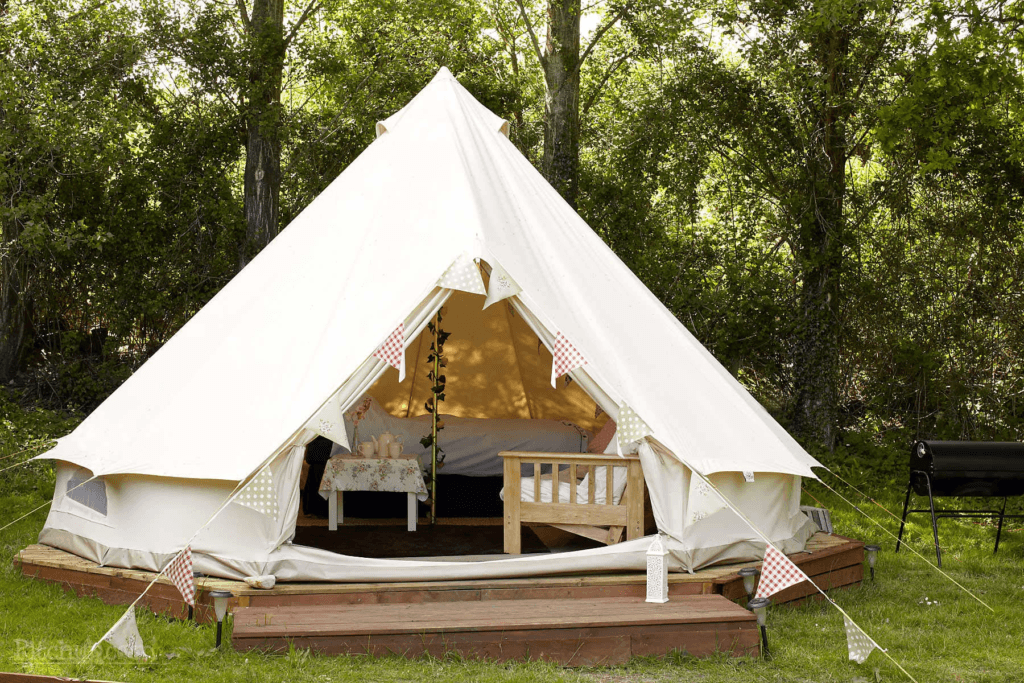The campsite selection is one of the most important parts of camping. Picking a site is similar to selecting your house. You will be staying there for at least a couple of days, so it all comes down to choosing the right community, drainage system, water supplies, and beautiful surroundings to set up your shelters for camping. When trekking with a trek leader or a guide, it’s easy to rely on them to choose an ideal campsite, but you’ll be powerless if you don’t understand the variables that make an ideal campground choice. So, the goal of this blog is to help you choose the right spot for your next camping.
Prepare Yourself in Advance.
When hiking in the mountains, you should plan your route ahead of time. You should know how far you’ll travel in a day and where you’ll stay at the end of the day.
On the path, you should be aware of all prospective campsites. The easiest approach to determine is to check local maps, although these are not widely available. In the highlands, talk to local guides or trekers. Get a good notion of where you’re going and ask whether another camping party is already there.
Water Source.
Another key item to consider while selecting a good campsite is the availability of water. To carry out all of your everyday activities, you’ll need a water supply close to your camping shelters. You’ll want to think about how close your campground is to water sources. It’s critical to remember that water may be both a risk and a benefit.
The best camping shelters are placed 200 feet away from the water sources, making it simpler for wildlife to get to the water and also helping to reduce nighttime contact with large animals. There will also be much fewer mosquitos.
Surface Level.
You should pick a spot with beautiful, flat terrain. Do not place your camping shelters on a ridge or at the base of a ridge. If it rains during the night, all of the water from the top of the slope will flow down to your campground. In the best-case scenario, you’ll wake up with a drenched sleeping bag and a flooded campground. A big flash flood, in the worst-case situation, will entirely wash away your campground. Natural disasters such as flash floods and increasing water levels are frequent. Keep this in mind, particularly if rain is on the horizon.
Wind.
When picking a campground, the first thing to consider is the wind. When people are looking for a place to camp, they usually opt for a large open location with plenty of space. They instantly begin building shelters for camping once they reach an open location. Wind rustles might wake you up in the middle of the night. Your tent’s door should not be towards the wind.
Finding a spot with dense woods around is a much better option. The trees in the area will assist to keep the wind from getting into your campground. In an open environment, the wind may make lighting a fire and cooking meals difficult. Furthermore, strong winds might put a damper on enjoyable campground activities.
However, a single tall tree can act as a lightning strike’s beacon. The best lightning protection comes from thick groups of trees with comparable heights in a low location distant from water. If you’re camping in the winter, stay away from trees with snow on their branches.
Toilet.
Personal matters should be handled outside of the tent. The excrement will attract insects and flies, spreading the nasty odor throughout the area. Campers who do not wish to use their RV vehicle’s restroom should look for a spot near the camp ground toilets.
Shade
If you’re camping in the summer or late spring, shade is very crucial, especially if you’re going with a tent and youngsters who might want to nap throughout the day. When pitching a tent or putting up a camper, keep the position of the Sun in mind.
Parking Area
When picking a camping location, be careful to check if you may park your car on the pitch or if it must be placed in a dedicated parking area.
If the camp does not have designated camp spots and you are free to find your own area, consider how much room you are taking up. Be mindful of other visitors.
Conclusion
We want to feel like we’re the first ones to arrive wherever we camp. The most basic thing is to check your site for small garbage. Pause for a moment after packing up and start inspecting the area, make sure to gather all of your parts and pieces and fluff up the soil or grassy area. Try not to leave any signs behind while packing up and moving to another campground. If you leave trash behind, it will not only contaminate the environment but will also attract wild animals, causing even more havoc.
- Best Camping Sites In India - May 28, 2023
- 10 Essential Items For A Comfortable Camping Trip - May 4, 2023
- The Best Camping Tents For Families - May 4, 2023

